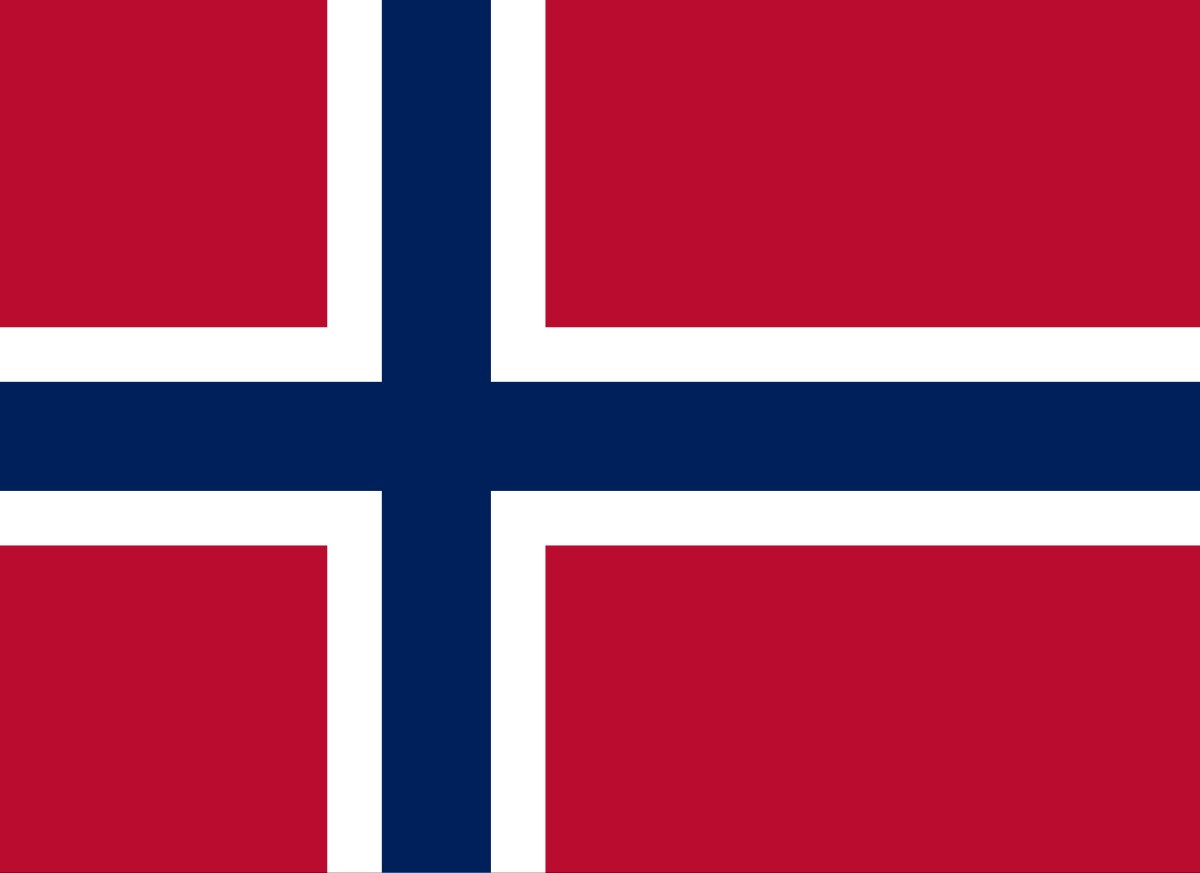Learning Norwegian presents a unique and rewarding journey. How Hard Is Learning Norwegian, exactly? This guide, brought to you by LEARNS.EDU.VN, explores the challenges and opportunities, offering solutions for mastering this beautiful language. Discover effective study methods, understand language similarities, and unlock the potential of Norwegian. Explore resources that enhance language acquisition and discover the joy of learning Norwegian, ultimately inspiring exploration of further educational articles at LEARNS.EDU.VN.
1. Understanding the Landscape: How Difficult is Norwegian?
Many factors determine how difficult learning Norwegian is for an individual. Let’s consider some of the critical components:
- Prior Language Experience: Exposure to Germanic languages like English or German can provide a head start.
- Learning Style: Do you thrive with structured courses or prefer immersive experiences?
- Time Commitment: Consistent study is key. Even short, regular sessions are more effective than sporadic marathons.
- Motivation: A strong desire to learn fuels progress and helps overcome obstacles.
- Available Resources: Access to quality learning materials, instructors, and practice partners makes a huge difference.
Norwegian is often considered one of the easier languages for English speakers to learn, thanks to its linguistic connections. The U.S. Foreign Service Institute (FSI) classifies languages by difficulty, and Norwegian falls into Category 1, meaning it requires approximately 575-600 hours of study to achieve professional working proficiency. This categorization suggests it is among the less challenging languages for native English speakers.
2. The Linguistic Connection: Why English Speakers Have an Advantage
The shared Germanic roots between English and Norwegian lead to significant similarities in vocabulary and grammar. This overlap provides English speakers with a distinct advantage.
2.1 Cognates: Familiar Words, Different Sounds
Cognates are words that share a common origin and often have similar meanings and spellings. Norwegian boasts many cognates with English, easing vocabulary acquisition.
| English | Norwegian | Meaning |
|---|---|---|
| Arm | Arm | Arm |
| Finger | Finger | Finger |
| Hand | Hånd | Hand |
| Name | Navn | Name |
| Book | Bok | Book |



2.2 Grammatical Similarities: A Familiar Structure
Both English and Norwegian follow a subject-verb-object sentence structure. While some grammatical differences exist, the fundamental framework is familiar.
- Word Order: Both languages generally follow the same basic word order.
- Tense System: Similarities in verb tenses make understanding and forming sentences easier.
- Limited Inflection: Unlike many other European languages, Norwegian has relatively little verb conjugation, simplifying grammar.
3. Potential Challenges: Navigating the Hurdles
Despite the advantages, learning Norwegian presents some unique challenges.
3.1 Pronunciation: Mastering the Sounds
Norwegian pronunciation can be tricky for English speakers. Mastering these sounds requires focused practice.
- Vowel Sounds: Norwegian has several vowel sounds not found in English.
- Consonant Clusters: Some consonant clusters can be difficult to pronounce for beginners.
- Tones: While not a tonal language in the same way as Mandarin Chinese, Norwegian has pitch accents that can differentiate words.
3.2 Gendered Nouns: A Grammatical Nuance
Norwegian nouns are divided into three grammatical genders: masculine, feminine, and neuter. While this might seem daunting, there are strategies to manage this aspect of the language.
- Memorization: Gradually learn the gender of common nouns.
- Context: Pay attention to how nouns are used in sentences, as articles and adjectives change depending on gender.
- Practice: Regular use reinforces gender awareness.
3.3 Dialects: A Diverse Linguistic Landscape
Norway has a rich tapestry of dialects, which can vary significantly from standard written Norwegian (Bokmål and Nynorsk).
- Exposure: Familiarize yourself with different dialects through audio and video resources.
- Focus on Understanding: Don’t try to master every dialect initially; prioritize understanding.
- Patience: Be prepared for variations in pronunciation and vocabulary.
4. Effective Learning Strategies: Maximizing Your Progress
Success in learning Norwegian depends on adopting effective learning strategies.
4.1 Immersion: Surround Yourself with the Language
Immersing yourself in the language is one of the most effective ways to learn.
- Listen to Norwegian Music: Expose yourself to the sounds and rhythms of the language.
- Watch Norwegian Movies and TV Shows: Start with subtitles and gradually reduce reliance on them.
- Read Norwegian Books and Articles: Begin with simple materials and gradually increase complexity.
- Label Objects: Place labels on objects around your home with their Norwegian names.
4.2 Structured Learning: Building a Solid Foundation
Structured learning provides a systematic approach to language acquisition.
- Textbooks: Utilize comprehensive textbooks to learn grammar and vocabulary.
- Online Courses: Enroll in online courses for structured lessons and interactive exercises.
- Language Apps: Use language apps for vocabulary practice and grammar drills.
4.3 Practice: Consistent Effort, Meaningful Results
Consistent practice is essential for reinforcing what you’ve learned.
- Speak with Native Speakers: Find language partners for conversation practice.
- Write in Norwegian: Keep a journal, write emails, or participate in online forums.
- Think in Norwegian: Challenge yourself to think in Norwegian throughout the day.
4.4 Utilize Resources from LEARNS.EDU.VN
LEARNS.EDU.VN offers valuable resources to support your Norwegian learning journey.
- Grammar Guides: Access clear and concise explanations of Norwegian grammar concepts.
- Vocabulary Lists: Expand your vocabulary with curated lists of essential words and phrases.
- Pronunciation Exercises: Improve your pronunciation with audio recordings and exercises.
5. Setting Realistic Goals: A Step-by-Step Approach
Setting realistic goals is crucial for maintaining motivation and tracking progress.
5.1 Short-Term Goals: Achievable Milestones
- Learn 10 new words each week.
- Complete one chapter of a textbook each week.
- Have a 5-minute conversation with a native speaker each week.
5.2 Long-Term Goals: A Clear Vision
- Be able to hold a basic conversation in Norwegian within six months.
- Read a Norwegian newspaper article within one year.
- Watch a Norwegian movie without subtitles within two years.
6. The Role of Motivation: Staying Inspired
Motivation is the engine that drives language learning. Find ways to stay inspired and engaged.
6.1 Connect with Norwegian Culture
Immerse yourself in Norwegian culture through music, literature, and film. This helps you appreciate the context behind the language.
6.2 Find a Language Partner
Connecting with a native speaker or fellow learner can make the process more enjoyable and provide opportunities for practical application.
6.3 Celebrate Successes
Acknowledge and celebrate your achievements, no matter how small. This positive reinforcement will keep you motivated.
7. Time Investment: How Long Does It Really Take?
While the FSI estimates around 575-600 hours, the actual time it takes to learn Norwegian varies depending on the individual.
- Basic Conversational Skills: Can be achieved in a few months with consistent study.
- Intermediate Fluency: May take a year or more of dedicated learning.
- Advanced Proficiency: Requires several years of immersion and practice.
8. Overcoming Plateaus: Breaking Through Barriers
It’s common to experience plateaus in language learning. Here’s how to overcome them:
8.1 Change Your Approach
If your current methods aren’t working, try something new. Explore different resources or focus on different skills.
8.2 Seek Feedback
Ask native speakers or language teachers for feedback on your pronunciation and grammar.
8.3 Don’t Give Up
Plateaus are a normal part of the learning process. Persistence is key to breaking through them.
9. Resources and Tools: Your Arsenal for Success
Numerous resources and tools can aid your Norwegian learning journey.
9.1 Online Dictionaries
Use online dictionaries to quickly look up words and phrases.
- Lexin: A comprehensive dictionary for Norwegian Bokmål and Nynorsk.
- Ordbok: The official dictionary of the Norwegian language.
9.2 Language Learning Apps
Language learning apps offer interactive lessons and exercises.
- Duolingo: A popular app for learning basic vocabulary and grammar.
- Memrise: An app that uses flashcards and spaced repetition to help you memorize words.
9.3 Textbooks and Workbooks
Textbooks and workbooks provide structured lessons and practice exercises.
- Complete Norwegian Beginner to Intermediate Course: A comprehensive course for beginners.
- Teach Yourself Norwegian: A self-study course for learning Norwegian at your own pace.
10. Embracing Mistakes: A Necessary Step
Mistakes are an inevitable part of language learning. Embrace them as opportunities for growth.
10.1 Don’t Be Afraid to Speak
The best way to improve your speaking skills is to practice, even if you make mistakes.
10.2 Learn from Your Errors
Pay attention to the mistakes you make and try to understand why you made them.
10.3 Be Patient with Yourself
Language learning takes time and effort. Be patient with yourself and celebrate your progress.
11. The Benefits of Learning Norwegian: Beyond Communication
Learning Norwegian offers numerous benefits beyond the ability to communicate.
- Cognitive Enhancement: Language learning improves memory, problem-solving skills, and multitasking abilities.
- Cultural Enrichment: Understanding Norwegian unlocks access to Norwegian culture, literature, and history.
- Career Opportunities: Knowledge of Norwegian can open doors to job opportunities in Norway and internationally.
- Personal Growth: Learning a new language boosts confidence and broadens your perspective.
12. Maintaining Momentum: Long-Term Strategies
Maintaining momentum is crucial for long-term success in language learning.
12.1 Set New Goals
Continuously set new goals to challenge yourself and keep learning.
12.2 Find New Ways to Practice
Explore different ways to practice your Norwegian, such as joining a language exchange group or volunteering in a Norwegian-speaking community.
12.3 Stay Connected to the Culture
Continue to immerse yourself in Norwegian culture through music, literature, and film.
13. Dialect Choice: Bokmål or Nynorsk?
Norwegian has two official written forms: Bokmål and Nynorsk.
13.1 Bokmål
Based on Danish, Bokmål is used by the majority of Norwegians.
13.2 Nynorsk
Nynorsk, based on rural dialects, is used by a smaller percentage.
For most learners, Bokmål is the more practical choice due to its widespread use.
14. Advanced Learning Techniques: Refining Your Skills
Once you’ve achieved a basic level of fluency, you can refine your skills with advanced learning techniques.
14.1 Shadowing
Shadowing involves listening to a native speaker and repeating what they say in real-time. This technique improves pronunciation and fluency.
14.2 Extensive Reading
Extensive reading involves reading large amounts of text for pleasure. This technique helps you expand your vocabulary and improve your reading comprehension.
14.3 Translation
Translation involves translating texts from English to Norwegian and vice versa. This technique improves your grammar and vocabulary.
15. Tailoring Your Learning: Customizing the Experience
Customize your learning experience to align with your interests and goals.
15.1 Focus on Your Interests
If you’re interested in a particular topic, find resources related to that topic in Norwegian.
15.2 Set Specific Goals
Set specific goals that are relevant to your needs, such as preparing for a trip to Norway or communicating with Norwegian colleagues.
15.3 Find a Tutor
A tutor can provide personalized instruction and feedback.
16. Real-World Application: Putting Your Skills to the Test
The ultimate test of your language skills is applying them in real-world situations.
16.1 Travel to Norway
Visiting Norway provides opportunities to immerse yourself in the language and culture.
16.2 Communicate with Norwegians
Communicate with Norwegians online or in person to practice your language skills.
16.3 Use Norwegian in Your Daily Life
Find ways to use Norwegian in your daily life, such as reading Norwegian news articles or listening to Norwegian podcasts.
17. Common Mistakes to Avoid: Learning from Experience
Learn from the mistakes of others to avoid common pitfalls.
17.1 Neglecting Pronunciation
Focus on pronunciation from the beginning to avoid developing bad habits.
17.2 Relying Too Much on Translation
Try to think in Norwegian rather than translating from English.
17.3 Giving Up Too Easily
Language learning takes time and effort. Don’t give up when you encounter challenges.
18. The Future of Norwegian Learning: New Trends and Technologies
Stay up-to-date on the latest trends and technologies in Norwegian learning.
18.1 Artificial Intelligence
AI-powered language learning tools are becoming increasingly sophisticated.
18.2 Virtual Reality
Virtual reality offers immersive language learning experiences.
18.3 Personalized Learning
Personalized learning platforms adapt to your individual needs and learning style.
19. Staying Current: Resources for Continued Growth
Continue to learn and grow by staying current with the language and culture.
19.1 Norwegian News
Read Norwegian news to stay up-to-date on current events.
- NRK: The Norwegian Broadcasting Corporation.
- Aftenposten: A major Norwegian newspaper.
19.2 Norwegian Podcasts
Listen to Norwegian podcasts to improve your listening comprehension.
- NorwegianClass101: Offers a variety of Norwegian language lessons.
- Learn Norwegian with Coffee Break Norwegian: Provides engaging and informative lessons.
19.3 Norwegian Blogs
Read Norwegian blogs to learn about Norwegian culture and lifestyle.
- Matprat: A food blog with Norwegian recipes.
- Visit Norway: The official travel guide to Norway.
20. Conclusion: The Journey Awaits
Learning Norwegian is a challenging but rewarding journey. With dedication, effective strategies, and the right resources, you can achieve your language learning goals. Embrace the process, celebrate your successes, and never stop learning.
FAQ: Your Burning Questions Answered
Here are some frequently asked questions about learning Norwegian:
- Is Norwegian grammar difficult?
Norwegian grammar is generally considered easier than many other European languages, with relatively simple verb conjugations and word order. - How long does it take to become fluent in Norwegian?
Fluency depends on individual factors, but most learners can achieve basic conversational skills in a few months and intermediate fluency in a year or more. - Is it necessary to learn both Bokmål and Nynorsk?
For most learners, focusing on Bokmål is sufficient due to its widespread use. - What are the best resources for learning Norwegian?
Textbooks, online courses, language apps, and conversation partners are all valuable resources. - How can I improve my Norwegian pronunciation?
Listen to native speakers, practice with pronunciation exercises, and record yourself speaking. - What is the best way to learn Norwegian vocabulary?
Use flashcards, spaced repetition, and contextual learning to memorize words and phrases. - How can I stay motivated while learning Norwegian?
Connect with Norwegian culture, find a language partner, and celebrate your successes. - What should I do if I experience a plateau in my learning?
Change your approach, seek feedback, and don’t give up. - Is it possible to learn Norwegian on my own?
Yes, it is possible, but it requires dedication, self-discipline, and access to quality resources. - What are the benefits of learning Norwegian?
Cognitive enhancement, cultural enrichment, career opportunities, and personal growth.
Ready to embark on your Norwegian learning adventure? Visit LEARNS.EDU.VN today for more resources, tips, and courses to help you achieve your language goals! Contact us at 123 Education Way, Learnville, CA 90210, United States. Whatsapp: +1 555-555-1212. Trang web: LEARNS.EDU.VN. Let learns.edu.vn guide you on your journey to mastering Norwegian. Start exploring today!